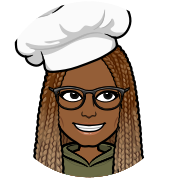Unit 1
Cards (56)
- How to plan an experiment1. Work out the aim of the experiment2. Identify the independent, dependent and control variables3. Decide what data to collect4. Select appropriate equipment which will give you accurate results5. Make a risk assessment and plan any safety precautions6. Write a detailed method7. Carry out tests and gather evidence to address the aim of the experiment
- VariableA quantity that has the potential to change, e.g: mass
- Independent VariableThe thing you change in the experiment
- Dependent VariableThe thing you measure in the experiment
- Continuous DataCan have any value on a scale and always have a higher resolution. Opposite to Discrete
- Categoric DataValues that can be sorted into categories
- Discrete DataData gathered via counting (e.g. number of bubbles released)
- How to choose appropriate equipment1. Must be appropriate for task2. Must be the right size3. Must be the right level of sensitivity
- A method must include1. All substances and quantities to be used2. How to control variables3. The exact apparatus needed. A diagram can be used to show how to set the apparatus up4. Any safety precautions which need to be taken5. What data to collect and how to collect it
- RepeatableIf the same person does the experiment again with the same equipment and methods, they will get the same/similar results
- ReproducibleIf someone else does the experiment again, or uses a different method or piece of equipment, the results will be the same/similar
- How to weigh solids using a balance1. The container will not affect the weight measured2. Make sure all the solid is transferred between containers and try to minimize the times you have to transfer
- How to measure the volume of a liquid1. Pipette2. Burette3. Volumetric Flask
- How to measure a gasMeasure with a gas syringe at room temperature and pressure
- How to measure temperature1. Use a thermometer or a temperature probe2. Make sure the bulb is completely submerged in any mixture you're measuring3. Wait for the temperature to stabilize before the initial reading4. Read the temperature at eye level with the scale
- How to reduce the subjectivity of qualitative results (in regards to colour change and precipitation reaction)1. If looking for colour change, put a white background behind your reaction container2. If looking for precipitate, mark an X on a piece of paper and place it under the reaction container. Your solution is cloudy when you can no longer see the X
- Reflux reactionsHeating a reaction mixture in a flask fitted in a condenser so that any materials evaporate, condense at drip back into the mixture
- DistillationGently heating a mixture so that the compounds evaporate off in order of increasing boiling point and can be collected separately
- Removing water soluble impurities1. Add water to an organic mixture in a separating funnel (any water soluble impurities move out of the organic layer and dissolve into the aqueous layer)2. The layers have different densities so easy to separate
- Use line graphs when there are 2 sets of continuous data
- Use scatter plots to show how 2 sets of data are related
- Use a bar charts when one set of data is categoric
- m³ to dm³ = x 1000
- dm³ to cm³= x 1000
- Percentage error(Uncertainty ÷ Reading) x 100
- Each piece of laboratory apparatus used to measure a quantity has a limit to its precision
- The error range will be +/− half of the smallest digit
- The more accurate the apparatus, the lower the percentage error
- The maximum error is an inevitable part of using that piece of equipment and is distinct from the competence with which the experiment is carried out
- Measuring a volume in an apparatus, such as a pipette, only requires one reading, so only one error is incurred
- Measuring a volume in a burette requires two readings — the initial volume and the final volume, so the maximum error is doubled
- Important decisions are sometimes based on the results of experiments
- Significant figuresWhen recording data, the precision should be indicated appropriately
- Burette readings are normally recorded to 0.05 cm3 as this represents the appropriate maximum error
- The volume measured in a burette should always be recorded to 2 decimal places and the second decimal place must always be either '0' or '5'
- Accuracy should be limited to the accuracy of the apparatus
- Systematic ErrorThe same every time you repeat the experiment. They may be because of the set up or equipment you used
- Random ErrorThey vary. These errors can occur from making a mistake when reading a measurement
- Valid resultAnswers the original question. If the experiment had not controlled all the variables, the results would not be valid as you would not be testing the thing you wanted
- Accurate resultsThose that are really close to the true answer
